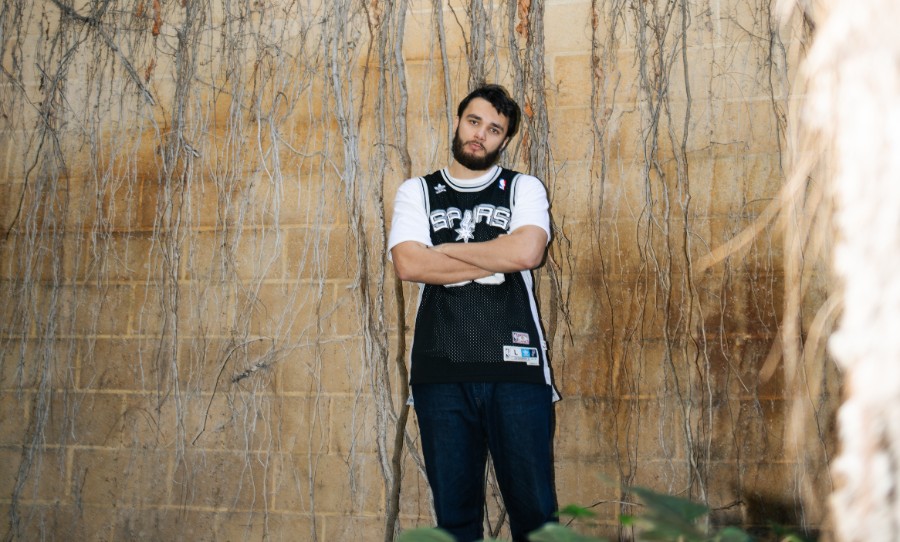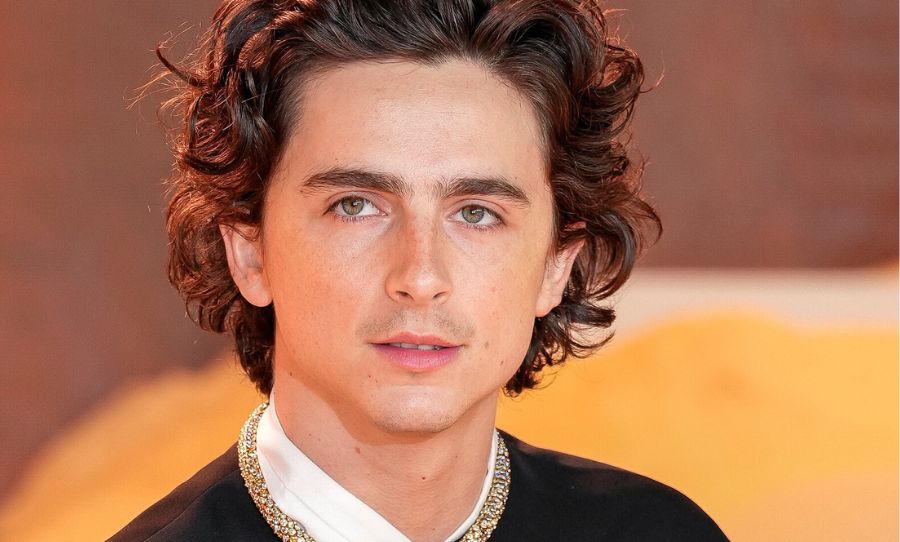Earlier this month, we were treated to airy soundscapes of Perth’s very own Kaikobad.
Armed with the ever-spacious double-singles Cornsilk and 14c clear, the bedroom producer took listeners from tropical retreats to heavenly atmospherics, embarking on a solely-instrumental voyage of summery catharsis.
Now, Kaikobad has stopped by Happy Mag for an insightful yarn on all things Cornsilk and 14c clear, the influence of Quincy Jones and 70s disco, and his quest to avoid “super obvious, played out buildups and drops.”

Catch our full interview with Kaikobad below, and scroll down to listen to his new double-single.
HAPPY: Tell us about where you are from? What’s the scene like in your neck of the woods?
KAIKOBAD: I’m here in Perth. A friend who has moved here from Melbourne got a water bottle that says “life in the slow lane”, which she feels is a pretty accurate description of life here.
As far as the scene, I really love what the Allbreedagency does with Mali Jose, Otius and all them. We really have some good and interesting stuff going on, outside of the typical ‘four white bros in a surf – rock band’ thing.
HAPPY: Describe an average day?
KAIKOBAD: Working, coffee, reading, and, if I’m lucky, I crank out a few songs and am in bed by 9:30 (consistent with life in the slow lane).
HAPPY: Can you tell us about your musical background and how you first got started in the world of music?
KAIKOBAD: I took drum lessons as a kid because I was way too fidgety and uncoordinated for piano or guitar or something. Basically I would just try imitate beats on old 2000s rnb songs until I got bored with it and gave it up. Then, in highschool I fell in love with discovering music through the samples borrowed in rap music.
Like “Damn, why does this 2pac song sound so good? Ohhhh, the beat uses a Bobby Caldwell song?” I had a little teenage realisation like “Ohhhh so everything comes from another thing which was built off another thing” and so on forever and ever. I got a laptop that was good enough to run a pirated FL studio and have been making music since.
HAPPY: Who are some of your biggest musical influences and how have they shaped your approach to creating music?
KAIKOBAD: So many… really I’m influenced by anything that is able to make space within the sound… so like on D’Angelo’s Voodoo record, I read that they took like 3 years to get the mix just perfect, and you can really hear it. One of my favourite albums ever.
So, I think I’m more influenced by what gets done with the sounds than the sounds themselves, if that makes any sense. I always go back to Jamie xx, Jai Paul, anything Timbaland or Quincy Jones touched, Sade, and a lot of 70s disco stuff because the drums are just so crisp.
HAPPY: How do you find inspiration for your compositions? Are there specific places, experiences, or emotions that tend to spark your creativity?
KAIKOBAD: Unfortunately I have absolutely zero creativity if I try to sit in front of my computer and do something – but unlimited ideas when doing literally anything else. Working, talking to someone, walking, whatever.
So throughout the day I fill my phones’ Notes app with cool words, things I see, musical ideas and mainly, timestamps of songs. When I get home I’ll load that clip of a few seconds into Ableton’s sampler and twist it until it sounds like something completely unrecognisable.
Maybe it’ll become a drum sample, or I reverb the hell out of it and it becomes an atmospheric layer to build a song upon, or I just destroy it and it becomes something weird and scary.
I find I usually make the best stuff when I’m in a good mood – a few years ago I was a much sadder person and all the music I made was a reflection of that. It’s way better now.
https://youtu.be/V3pzM8CAEhg?si=79CTYAPX9JILTpLG
HAPPY: Could you share a memorable moment from your musical journey that has had a significant impact on you as an artist?
KAIKOBAD: Right before I started putting music out this year, my water bottle leaked in my laptop bag and soaked it – and the charging point was fried.
I didn’t have anything backed up, and for whatever reason you can’t just replace parts on the sorta laptop I have (heed my warning, it’s a Windows Surface Laptop), so pretty much all the work, samples I’d made, fully finished songs, everything had done for the last 3 years was gone, and I had pretty much nothing to show for it.
For around two weeks I was trying to revive it in whatever way I could – cleaning it, plugging it in and out over and over again, going to JB Hifi and using their chargers to see if they worked… nothing.
But, randomly, if I fiddled with it from a very precise, certain angle, it would charge for just the time i held it in the port, and so I gave it enough juice to back everything up. Eventually, somehow, it came back to life and now functions normally.
It’s old and slow so I’ll need a new one someday, but the whole situation made me realise I should probably get a move on and start releasing stuff. It made me value everything I did over the past few years – you never know what you got till it’s gone!
HAPPY: Your double-single release, “Cornsilk” and “14c clear,” takes listeners on a journey from tropical retreats to spacey atmospherics. Can you share the inspiration behind this dualistic sonic exploration?
KAIKOBAD: I love the double-single! Underrated format in my opinion. I would like to think 14c clear is like an extended, reflective outro to a more moveable and fun track.
HAPPY: How do you approach incorporating natural sounds into your electronic compositions to create such immersive experiences?
KAIKOBAD: A few years ago I bought this field recorder thing because I kept using the same ‘nature’ sounds over and over and got super sick of them. I was working a job where I had a bunch of downtime and I would just walk around an office building and record stuff.
Once I saw this funny tweet which was something like ‘ambient producers try not to use bird noises at the start of a song challenge: (impossible)’ so I try to make it tasteful or interesting. A lot of songs use vinyl or foley or nature recordings but in a subtle way that just builds the palette of the song.

HAPPY: The build-up in “Cornsilk” is described as unflashy yet powerful. Can you share how you go about crafting moments of climax and catharsis in your music without relying on traditional methods?
KAIKOBAD: I’m no dance music snob but I can’t get around super obvious, played out build ups and drops. Sometimes when I’m at a show or something and I hear a longggg, screeching build up and disappointing drop, I feel like people aren’t really into it that much.
People are looking around at eachother like ‘oh okay this is meant to sound cool, I’m meant to like this’. So for me I never try to make a climax a super loud or obvious moment, instead I try to get a more emotional climax like songs outside of dance music have, like how the Beach Boys use vocal harmonies on Pet Sounds or something.
HAPPY: “14c clear” embraces a more ambient and brooding soundscape, evoking a cinematic quality. What sparked the inspiration for this deeply atmospheric piece, and how do you create a sense of unending spaciousness in your music?
KAIKOBAD: Most of my songs start as long, melody-less messes that kinda just float around. At some point I’ll then try to rein in the song a bit with a melody and drums and that sort of stuff, this was not one of those cases!
The song really began to take shape when I wrote the piano chords – I felt like they were strong and everything should be built around them.
HAPPY: Your music tells a story of solemnity and optimism without the use of lyrics. How do you approach composing instrumental music to convey complex emotions and narratives?
I guess there are different approaches. Secret is my tracks usually have lyrics to start with – I really like how someone like Burial will twist lyrics from r&b and pop music to atmospheric beats – and I usually do that.
Most of my songs have r&b acapellas that they were built along with, that I remove before getting the song up. A lot of lyrics to pop and r&b music are actually really sad and heartfelt beneath the shiny production and melody – at least my favourite ones are.
HAPPY: You’re compared to influential electronic artists like FourTet and Jon Hopkins. How have these artists influenced your sound, and what elements of their music do you aim to incorporate into your own compositions?
KAIKOBAD: I guess one thing I love about both of them is their ability to make amazing bodies of work. Albums like Rounds, Immunity or Sixteen Oceans – these are flowing, moving albums that are start-to finish.
With Jon Hopkins, Immunity was dance music with sounds I’d never heard before – but the song structures were familiar enough to keep it on track. Four Tet’s music has a lot of love in it – I listen to it all the time and it definitely influences my stuff.
HAPPY: Can you tell us about your creative journey and how you’ve honed your ability to craft such evocative soundscapes in a relatively short span of time?
KAIKOBAD: Truth is I can’t make anything that I don’t put my heart into – it comes out super crap and forced otherwise. I think that’s something I really love about a lot of music from the 70s – unabashed emotion, to the point of (what today people might consider) corniness.
Songs were about love or being happy or seeing someone cute and people put their all into that. Also, a lot of 90s r&b I sample plays into this. I mean, Jodeci were posted up in the desert singing in leather vests because a girl they liked had been gone for an hour. I try to channel that energy.
HAPPY: Looking ahead, what can listeners expect from Kaikobad in terms of future projects or musical directions?
KAIKOBAD: I am keen to produce pop music. All the best pop music is actually super weird and on the verge of not working at all (like Bjork or Bollywood sampling Toxic by Brittany Spears) – and I think outside of dance stuff, it has the most room for experimentation.
HAPPY: What makes you happy?
KAIKOBAD: There’s a pizza shop near me that absolutely slaps. I am happy whenever I eat from there.



